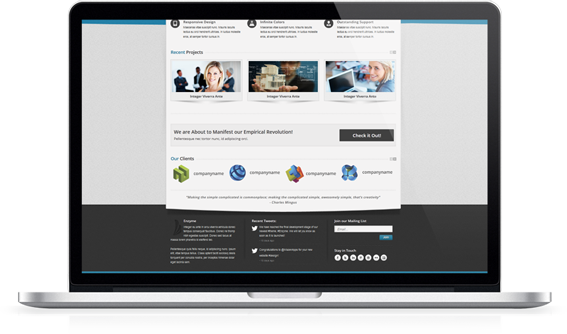AN EPIC SHOWDOWN BETWEEN APPLE AND THE FEDS.
Source: Yahoo news
Apple (AAPL) and the U.S. government have been sniping at each other in a series of carefully released court filings and public statements over how far the tech giant should go to help law enforcement catch bad guys. But there seems to be a far bigger battle going on than either side has acknowledged.
In California, the FBI is trying to use legal motions and public pressure to force Apple to write new software that would allow the feds to crack into an iPhone used by one of the shooters in last December’s mass murder in San Bernardino. In New York, a different set of prosecutors has been seeking a similar outcome from Apple in a case involving the iPhone used by a convicted drug dealer. Intriguing details of both cases have slipped out, but a broader examination of these legal maneuvers suggests that a climactic legal battle has been brewing behind the scenes, with consequences that could be momentous. Apple and the Justice Department also seem to deeply distrust each other, with more acrimony in closed courtrooms than has been evident in public statements.
Newly unsealed court documents, for instance, show that Apple has been ordered to help unlock encrypted devices at least 12 times since last September, including the New York and San Bernardino cases. In each case, Apple objected to the order, though the government says Apple hasn’t formally appealed those orders; instead, Apple has “simply deferred complying” with the orders, according to one government document, which suggests further legal action may be coming. The government also accuses Apple of privately agreeing to help unlock a device in one of those cases, then changing its mind once the agreement became public.
The whole thorny question of Apple and other smartphone makers helping the government unlock encrypted devices has exploded into view following the San Bernardino shooting on Dec. 2, 2015, which killed 14 and injured many more. One of the two shooters in that case, Syed Rizwan Farook, used an iPhone 5C that the government can’t crack without Apple’s help. Earlier this month, a federal magistrate ordered Apple to write code that would make it easier for the FBI to access the phone. That was one order Apple formally appealed, setting up a legal showdown that has split loyalties among the public and even led Republican presidential candidate Donald Trump to call for a boycott of Apple products until it agrees to help the FBI.
Before San Bernardino
When it first became public, the San Bernardino case seemed like the first of its kind. But newly unsealed documents from the unrelated New York case now reveal that the San Bernardino case is just one of several winding through the courts, with many of them probably further along than the San Bernardino case. While smartphones aren’t new, encrypted operating systems that authorities can’t crack into without the manufacturer’s help are. In Apple’s case, iOS 8, released in 2014, was the first system to raise encryption to that level, and court cases seeking to clarify Apple’s obligations are just now becoming public. Google (GOOGL) enacted a similar standard on its Android 6.0 mobile software, which debuted last year. It stands to reason Google faces similar legal challenges, or soon will.
In a New York case that began last October, the Justice Department ordered Apple to unlock an iPhone 4S belonging to a man named who Jun Feng who was convicted of a narcotics charge involving crystal methamphetamine. Even though the suspect pled guilty, both Apple and the government agreed to continue the case. The feds still want information that might be stored on the phone because it could implicate others in league with Feng. Apple wants a ruling in the case because it is “capable of repetition,” as an Apple lawyer wrote in a court filing—meaning the issue is likely to surface again in other cases.
The San Bernardino case may be one example of repetition, with the other cases working through courts in New York, Illinois, California, Massachusetts and Ohio. Most of the other cases remain sealed, so it’s not clear what the status or circumstances of each might be. What is clear is that the New York case from last October is closer to an outcome than the San Bernardino case, since the judge has already heard arguments from both sides and may soon issue a ruling. The issue “has been fully briefed and argued,” Marc Zwillinger, an attorney representing Apple, wrote in a letter to the judge dated Feb. 12. “The court is already in a position to render a decision…. Doing so would be more efficient than starting the debate anew… in another court.”
Apple and the government have been dickering over the complex question of whether Apple can write special software to help unlock one phone at a time, then essentially throw away the program, or whether that would create a kind of skeleton key that might end up universally available to both good guys and bad guys.
This discussion probably went on in private conversations between the two sides long before anybody filed a motion in court. In the San Bernardino case, for instance, the FBI obtained Farook’s iPhone on Dec. 3, during a search of his black Lexus IS300, and presumably tried to get into it right away. But the government didn’t file a motion seeking to compel Apple’s assistance until Feb. 16, 2016, roughly two and a half months later.
Neither side has described discussions leading up to that filing, but court documents give a clue. The government’s request repeatedly insists that Apple has the means to access the “SUBJECT DEVICE only” (caps used in the original), as if prosecutors were acutely aware of Apple’s concern that any software created to unlock a single phone could leak out or be applied to other phones. The government even suggested that decrypting software could be installed “at an Apple facility,” allowing Apple to retain physical control of any software it created.
Not about one phone
Cook says it’s not that simple—and technology experts back him up. “There could be all kinds of spy games going on,” says Avivah Litan, a vice president at the Gartner Group. “The government could give them a phone with something in it that could copy the program. I think Apple has probably been burned before and they don’t trust the government.” It’s also possible Apple could be legally ordered, at some point, to turn over code it thought it could keep private. For starters, it’s tricky for the government to turn over evidence to a third party if it wants to use that evidence in court some day, since it would have to validate the chain of custody and prove the phone hadn’t been tampered with. In a criminal case, Apple’s new code might have to undergo third-party testing to help prove any information taken from the phone is legitimate. “The FBI has treated this as if you just put the phone inside some magic box, and out it comes,” says Alan Butler, an attorney with the Electronic Privacy Information Center, which supports Apple in the dispute. “That’s not necessarily how evidence gathering works. Once you open the box, I don’t see how you keep the code secret.”
The other cases in which federal prosecutors are seeking Apple’s help to unlock encrypted devices demonstrate that the San Bernardino case is hardly a one-off. In the New York case, prosecutors even filed some of the documents from the San Bernardino case, indicating coordination among prosecutors working on different cases. Apple is surely aware of all the federal cases it must deal with, giving the company a broader perspective on the government’s overall strategy than would be evident from any single case.
The San Bernardino phone may not even be all that important. Farook had two other phones, and law enforcement sources say terrorists such as Farook—who had pledged loyalty to Islamic State—often have at least two phones, one for personal use and the others for business, as it were. Farook destroyed the two other phones, along with a lot of computer equipment in his home, suggesting that’s where the real evidence probably was. He left the iPhone 5C in question sitting in his car. “Judges understand the immediacy of an issue,” says Butler. “Interestingly, the FBI didn’t request anything like that in its motion to compel compliance. No one in court has argued it’s a matter of life and death tomorrow.”
Pulling all the known cases together makes it clearer that Apple, in taking a hard line on any one case, is actually battling several at once. Then there is the further complication of how foreign governments are likely to respond if the U.S. Justice Department succeeds in getting Apple to decrypt a phone. China, to mention just one, would dearly love to have the ability to crack into encrypted devices at will. If Apple created that capability, the Chinese communist government could even require Apple to provide it as a condition of selling phones in China, which would undoubtedly hit the company’s bottom line.
The U.S. government has some valid arguments, too. In the San Bernardino case, it argued that Apple is fighting the government’s order to help unlock the Farook phone “based on its concern for its business model and public brand marketing strategy.” Apple insists its main concern is user privacy, but in a hearing in the New York case last October, Judge James Orenstein repeatedly questioned that argument, even suggesting that Apple was strategically fighting government orders to gain favorable publicity. “It’s an advertisement for buying our new phones, right,” he queried Apple’s lawyer, “because we won’t be able to do this. If you just get our newer phone, we can’t do this for the government. So yes, sell more phones.” If that is indeed Apple’s strategy, the matter is now getting enough attention to test whether it works.
Leave a Comment
Let Millions of People know about your Product(s) / Service(s)
Target a Specific Audience on different News Categories
Our Partners
"Making the simple complicated is commonplace; making the complicated simple, awesomely simple, that's creativity"
- Charles Mingus















































